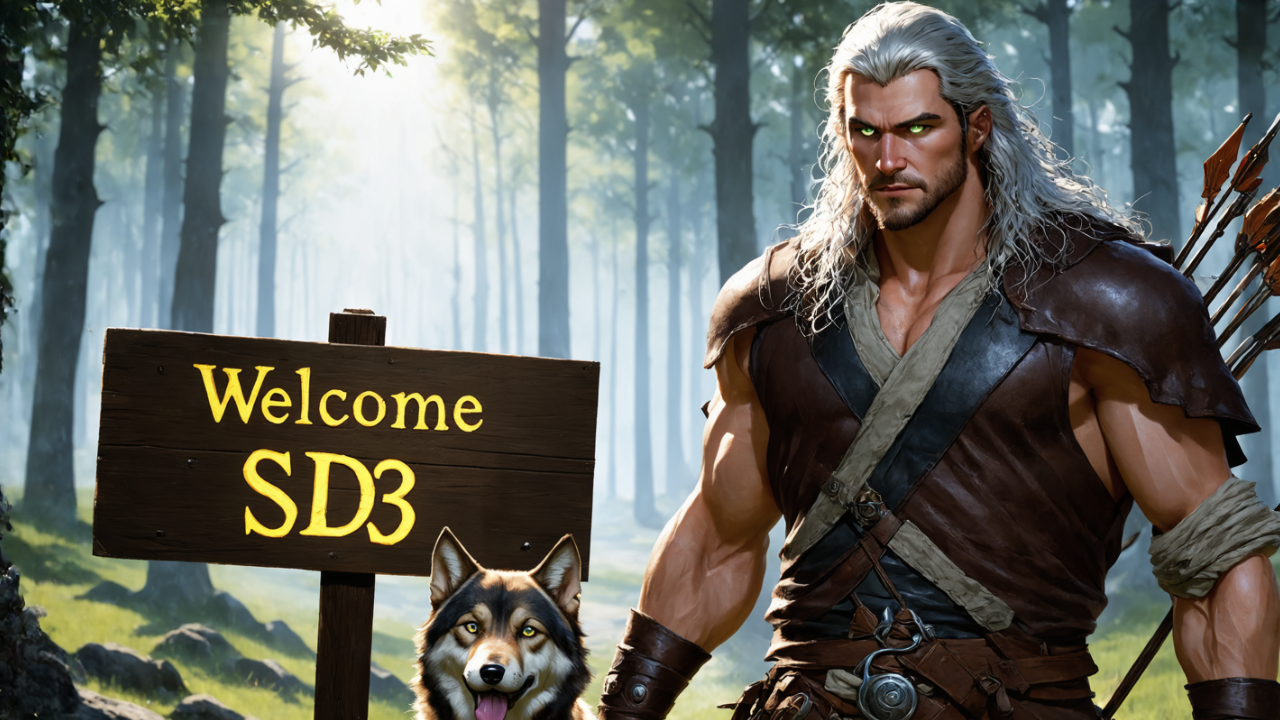This content originally appeared on HackerNoon and was authored by Furkan Gözükara
\ \ Don’t skip a second of this tutorial if you want to master Stable Diffusion 3 (SD3) using the cutting-edge generative AI open-source app, SwarmUI. While Automatic1111 SD Web UI and Fooocus don’t yet support SD3, SwarmUI has you covered. Developed by StabilityAI, #StableSwarmUI will amaze you with its incredible features. It builds on #ComfyUI’s robust backend, combining the best of ComfyUI with the user-friendly features of Automatic1111’s #StableDiffusion Web UI.
\ I’m excited about SwarmUI and will be creating more tutorials to showcase its capabilities.
https://youtu.be/HKX8F1Erw?embedable=true
:::tip 🔗 The Public Post (no login or account required) Shown In The Video With The Links ➡️ https://www.patreon.com/posts/stableswarmui-3-106135985
:::
\
Stable Diffusion 3 Tutorial Time Stamps
0:00 Introduction to the Stable Diffusion 3 (SD3) and SwarmUI and what is in the tutorial
4:12 Architecture and features of SD3
5:05 What each different model files of Stable Diffusion 3 means
6:26 How to download and install SwarmUI on Windows for SD3 and all other Stable Diffusion models
8:42 What kind of folder path you should use when installing SwarmUI
10:28 If you get installation error how to notice and fix it
11:49 Installation has been completed and now how to start using SwarmUI
12:29 Which settings I change before start using SwarmUI and how to change your theme like dark, white, gray
12:56 How to make SwarmUI save generated images as PNG
13:08 How to find description of each settings and configuration
13:28 How to download SD3 model and start using on Windows
13:38 How to use model downloader utility of SwarmUI
14:17 How to set models folder paths and link your existing models folders in SwarmUI
14:35 Explanation of Root folder path in SwarmUI
14:52 VAE of SD3 do we need to download?
15:25 Generate and model section of the SwarmUI to generate images and how to select your base model
16:02 Setting up parameters and what they do to generate images
17:06 Which sampling method is best for SD3
17:22 Information about SD3 text encoders and their comparison
18:14 First time generating an image with SD3
19:36 How to regenerate same image
20:17 How to see image generation speed and step speed and more information
20:29 Stable Diffusion 3 it per second speed on RTX 3090 TI
20:39 How to see VRAM usage on Windows 10
22:08 And testing and comparing different text encoders for SD3
22:36 How to use FP16 version of T5 XXL text encoder instead of default FP8 version
25:27 The image generation speed when using best config for SD3
26:37 Why VAE of the SD3 is many times better than previous Stable Diffusion models, 4 vs 8 vs 16 vs 32 channels VAE
27:40 How to and where to download best AI upscaler models
29:10 How to use refiner and upscaler models to improve and upscale generated images
29:21 How to restart and start SwarmUI
32:01 The folders where the generated images are saved
32:13 Image history feature of SwarmUI
33:10 Upscaled image comparison
34:01 How to download all upscaler models at once
34:34 Presets feature in depth
36:55 How to generate forever / infinite times
37:13 Non-tiled upscale caused issues
38:36 How to compare tiled vs non-tiled upscale and decide best
39:05 275 SwarmUI presets (cloned from Fooocus) I prepared and the scripts I coded to prepare them and how to import those presets
42:10 Model browser feature
43:25 How to generate TensorRT engine for huge speed up
43:47 How to update SwarmUI
44:27 Prompt syntax and advanced features
45:35 How to use Wildcards (random prompts) feature
46:47 How to see full details / metadata of generated images
47:13 Full guide for extremely powerful grid image generation (like X/Y/Z plot)
47:35 How to put all downloaded upscalers from zip file
51:37 How to see what is happening at the server logs
53:04 How to continue grid generation process after interruption
54:32 How to open grid generation after it has been completed and how to use it
56:13 Example of tiled upscaling seaming problem
1:00:30 Full guide for image history
1:02:22 How to directly delete images and star them
1:03:20 How to use SD 1.5 and SDXL models and LoRAs
1:06:24 Which sampler method is best
1:06:43 How to use image to image
1:08:43 How to use edit image / inpainting
1:10:38 How to use amazing segmentation feature to automatically inpaint any part of images
1:15:55 How to use segmentation on existing images for inpainting and get perfect results with different seeds
1:18:19 More detailed information regarding upscaling and tiling and SD3
1:20:08 Seams perfect explanation and example and how to fix it
1:21:09 How to use queue system
1:21:23 How to use multiple GPUs with adding more backends
1:24:38 Loading model in low VRAM mode
1:25:10 How to fix colors over saturation
1:27:00 Best image generation configuration for SD3
1:27:44 How to apply upscale to your older generated images quickly via preset
1:28:39 Other amazing features of SwarmUI
1:28:49 Clip tokenization and rare token OHWX

This content originally appeared on HackerNoon and was authored by Furkan Gözükara
Furkan Gözükara | Sciencx (2024-08-14T11:46:02+00:00) Mastering Stable Diffusion 3: A Comprehensive Guide to Using SwarmUI for Stunning AI Art. Retrieved from https://www.scien.cx/2024/08/14/mastering-stable-diffusion-3-a-comprehensive-guide-to-using-swarmui-for-stunning-ai-art/
Please log in to upload a file.
There are no updates yet.
Click the Upload button above to add an update.
